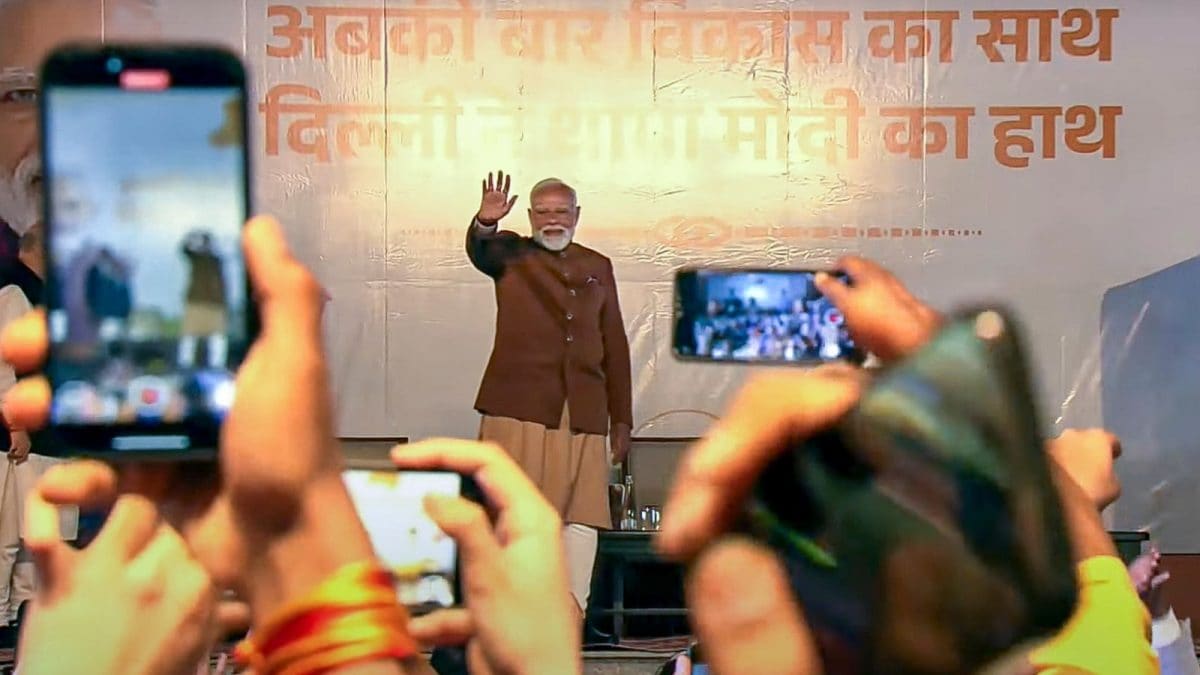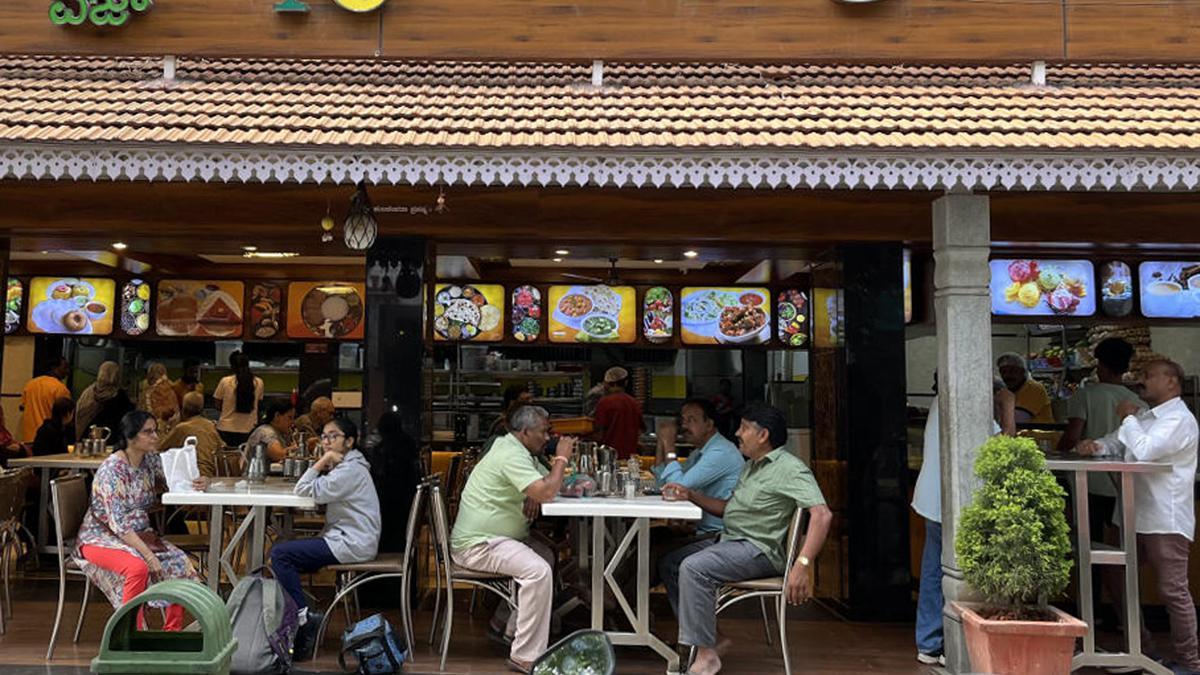Last Updated:
Sources said caste dynamics as well as the Congress performance in at least 14 seats, where it hacked into the AAP’s vote share, could be some of the reasons behind the BJP’s historic win in the Delhi assembly polls
PM Narendra Modi greets supporters upon his arrival at BJP headquarters, on the day of counting of votes for Delhi assembly elections, in New Delhi on February 8. (Image: @NarendraModi/Youtube/PTI)
The BJP swept to power in the national capital after a gap of 27 years, trouncing the formidable challenge from the AAP, as the results of the Delhi assembly elections were declared on Saturday. The saffron party won 48 out of 70 seats, while Arvind Kejriwal’s party was reduced to 22 seats.
Parvesh Sahib Singh Verma emerged as the giant killer as he defeated Kejriwal from the New Delhi assembly constituency, while other big names like Manish Sisodia, Saurabh Bharadwaj, and Satyendar Jain also fell to the BJP blitzkrieg.
The BJP lost power in 1998 to the Congress, which could not open its account for the third straight election despite having ruled for three terms before the AAP government took over.
Follow Delhi Election Results 2025 LIVE Updates
BJP WINNERS AND CONSTITUENCIES | FULL LIST
But, what are the reasons behind BJP’s return to power with such a strong mandate? Was it a hyper-localised campaign targeting the AAP’s loyal base or was it Prime Minister Narendra Modi’s ‘AAP-da’ slogan that ended his party’s long drought?
This time, the BJP’s vote share jumped to nearly 46 per cent, while the AAP’s fell to 43.5 per cent. The BJP’s vote share grew from over 32 per cent in 2015 to 38.5 per cent in 2020 against the AAP’s over 54 per cent and 53.5 per cent, respectively.
According to sources, caste dynamics as well as the performance of the Congress in at least 14 seats, where it hacked into the AAP’s vote share, could be a few of the reasons behind the BJP’s historic win.
Let’s take a look:
CATEGORY-BASED ANALYSIS
- Out of 12 candidates in the scheduled caste (SC) category, four have won
- Out of 22 candidates in the other backward classes (OBC) category, 16 have won
- There are seven seats with more than 10 per cent OBC population. The BJP won all of them.
CASTE-BASED ANALYSIS BY POPULATION/VOTERS
- Out of four seats with more than 10 per cent Sikh voters, the BJP won three
- Out of 28 seats with more than 10 per cent Punjabis, the BJP won 23
- Out of five seats with more than 10 per cent Gujjar voters, the BJP won two
- Out of 13 seats with over 10 per cent Jat voters, the BJP won 11
- Out of nine seats with more than 10 per cent Valmiki voters, the BJP won four
- Out of 12 seats with more than 10 per cent Jatav voters, the BJP won six.
DOMICILE ANALYSIS
- Out of six Purvanchali BJP candidates, four won
- Out of 14 Haryanvi candidates, 12 won
- Out of three Uttarakhandi candidates, two won
- Out of 35 seats with more than 15 per cent Purvanchali voters, the BJP won 25 seats
- Out of 13 seats with more than 5 per cent Haryanvi voters, the BJP won 12.
ANALYSIS OF BORDER CONSTITUENCIES
- Out of a total of 22 assembly seats that share a border with neighbouring states – Haryana and Uttar Pradesh – the BJP won 15
- There are 13 seats that border Uttar Pradesh. Out of these, the BJP won seven
- There are 11 seats that border Haryana, of which the BJP won nine.
HABITATION-BASED ANALYSIS
Out of seven jhuggi-jhopdi seats, the BJP won four. These are Timarpur, Badli, New Delhi, and RK Puram.
CONGRESS PERFORMANCE MADE A DIFFERENCE?
- There are three seats where the Congress is not among the top three. These are Mehrauli, Okhla and Mustafabad
- There are 14 seats in the state where the Congress spoiled the party for the AAP. These include Timarpur, Badli, Nangloi Jat, Madipur, Rajender Nagar, New Delhi, Jangpura, Kasturba Nagar, Malviya Nagar, Mehrauli, Chhatarpur, Sangam Vihar, Greater Kailash, and Trilokpuri.
ALSO READ | Will Delhi Debacle End Congress’ ‘Big Brother’ Dream, Sound Death Knell For INDIA Bloc?
WHAT ARE THE OTHER FACTORS THAT WORKED?
- A focused campaign featuring leaders from across the country – chief ministers, Union ministers and NDA constituents reached out to specific regional groups in the national capital
- Freebies offered by the AAP were countered by “Modi’s guarantee”, which appeared to find favour with voters
- Substantial ground work by RSS and like-minded organisations
- Wooing the middle class with announcements of income tax relief in the Union Budget
- The BJP ran a localised campaign highlighting civic issues such as lack of roads, irregular water supply, air pollution, and non-functional mohalla clinics.
ALSO READ | Another Feather In Amit Shah’s Cap: BJP’s Supreme Strategist Delivers In Delhi Polls
Apart from the BJP’s usual all-decks-on-hand approach, which strengthened the voice for change in Delhi on the ground, corruption charges against AAP leaders, including jail trips for Kejriwal and Sisodia, as well as the alleged ‘Sheeshmahal’ scandal sealed the party’s fate. ‘Brand Kejriwal’, which was based on the promises of corrupt-free governance and a belief in an austere lifestyle, suffered a rapid deterioration. Allegations of the liquor scam also appeared to stick, ultimately backfiring for the party founded on the back of the India Against Corruption movement.





